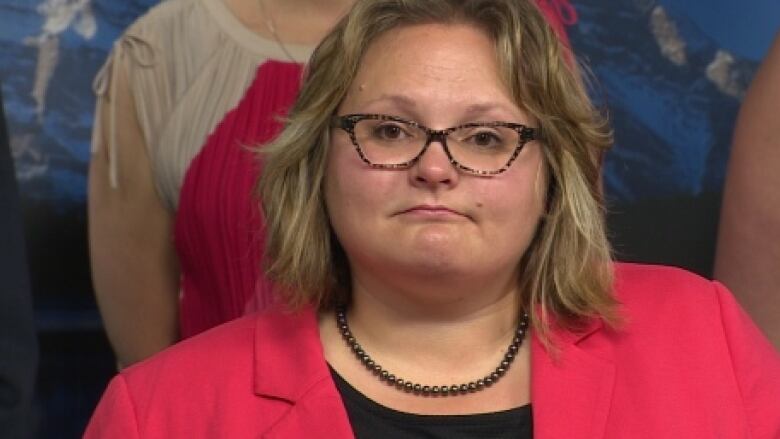Report examines the costs and the causes of Alberta's ongoing PPA fight
Economists split blame between policy and prices, argue against government's $2B figure

Anew reportcallsinto question the Alberta government'scost estimates in relation to power companies walking away from agreements and outlines the combination of factors that are making those agreements unprofitable.
Written by economists Trevor Tombe and Andrew Leach who chaired the province's climate change advisory paneland published bythe University ofCalgary's School of Public Policy, the report deals with the controversy surrounding Power Purchase Arrangementsin Alberta's complex private energy market.
- Alberta asks court to quash 'secret' clause that benefits power companies
- NDP's claim that secret clause added to power purchase arrangement is 'balderdash,' says analyst
The government is going to court in an attempt to prevent the companies that own the PPAs from walking away from the arrangements something the government said will costAlbertans$2 billionciting the new increased emissions fees and Alberta's new climate policy.
Enronclause
The government argues the clause in the PPAs that the companies are using to justify leaving the agreements was inserted illegallyafter a year of public consultations and was never made public the so-called "Enron clause," as it was negotiated by a thenEnron executive.
"For something that clearly put so much liability back onto the public, not being discussed with the public, certainly doesn't speak to that kind of fair and open relationship," said deputy premier Sarah Hoffman while discussing the new report.
PPAs are agreements between electricity suppliers and power plants that existed prior to privatizationof Alberta's grid.
Those who own the PPAs agree to pay the plants atestablished rates and then take the power and sell it on the open market in the hopes of turning a profit.
This was meantto soften the blow to power plants duringthe transition to an open market.
Splitting the blame
The report splits the blame for the current unprofitability of those agreements between increased charges on greenhouse gas emissions, falling electricity prices andchanges to how emissions and subsequent creditsare measured.
The change to emissions credits hit coal-fired plants particularly, and intentionally, hard.
According to the report, the true cost to Albertans will be somewhere closer to $900 million, or $600 million if you consider the public is already essentially the owner of one of the PPAs.
"To put that cost into perspective, it works out to roughly $2.25 per month on average between now and 2020, so a pretty moderate cost," said Tombe on the $900-million price tag.
He said that figure is based on "naively" assuming the cost will simply be spread out over that time on power bills.
Tombe saidthe government may have used older and lower price estimates to come up with its $2 billionfigure.
Of course, the future cost to Albertans, if there is any, is a little more complicated than that.
The problem of prices
Currently, households receive a discount on their bills from the profits generated by the Balancing Pool, the central body that manages the PPAs.
That discount on bills could bereduced, or it could turn into a charge, depending on how things shake out.
That depends on the price of electricity and throws a wrench into simple explanations when it comes to cost.
Albertans will only pay for the PPA fiasco if electricity prices and therefore electricity billsremain low, according to the report.
Which leads to thecontention that low prices are at least partially responsible for the falling profits associated with PPAs.
While the report said policy changes both fees on emissions and changing measurements and credits reduced the value of PPAs by $1.3 billion, falling prices have resulted in a furtherreduction of $1.1 billion.
More unprofitable
The province's court case rests on the idea that the clause being used by the companies to justify their actionswhich states they can walk away when those agreement become "more unprofitable" was inserted illegally into the agreements.
The report quotes Nigel Banks, a University of Calgary law professor, as saying, "It is hard to overestimate the breadth of this definition and the scope of the protection it offers an owner."
Hoffman said the government believes the clause is not only illegal,it's plainunfair.
"I think they made $10 billion when prices were good, and now that prices are low they believe they have the opportunity to try to give these backthat they're trying to maximize their profits and pass back any risk back onto Albertans," she said.
The court proceedings will begin on Nov.2, and the report suggests the case could provide a strong negotiating position for the government.
"A negotiated settlement may be one where PPA holders take on at least some of the losses due to low prices, while Albertans bear the costs of changing policies something more in line with the spirit of the arrangements," it reads.
Clarifications
- A previous version of this story stated some companies had insisted government policy alone was to blame for PPAs no longer being profitable. Government policy is the reason the companies argue they can bail out of PPAs, but it's not the single reason why PPAs are no longer profitable. They are less desirable due to the effects of changing government policies and plummeting prices.Aug 10, 2016 5:12 PM MT
With files from Carolyn Dunn and Jennifer Lee












_(720p).jpg)


 OFFICIAL HD MUSIC VIDEO.jpg)
.jpg)



























































































